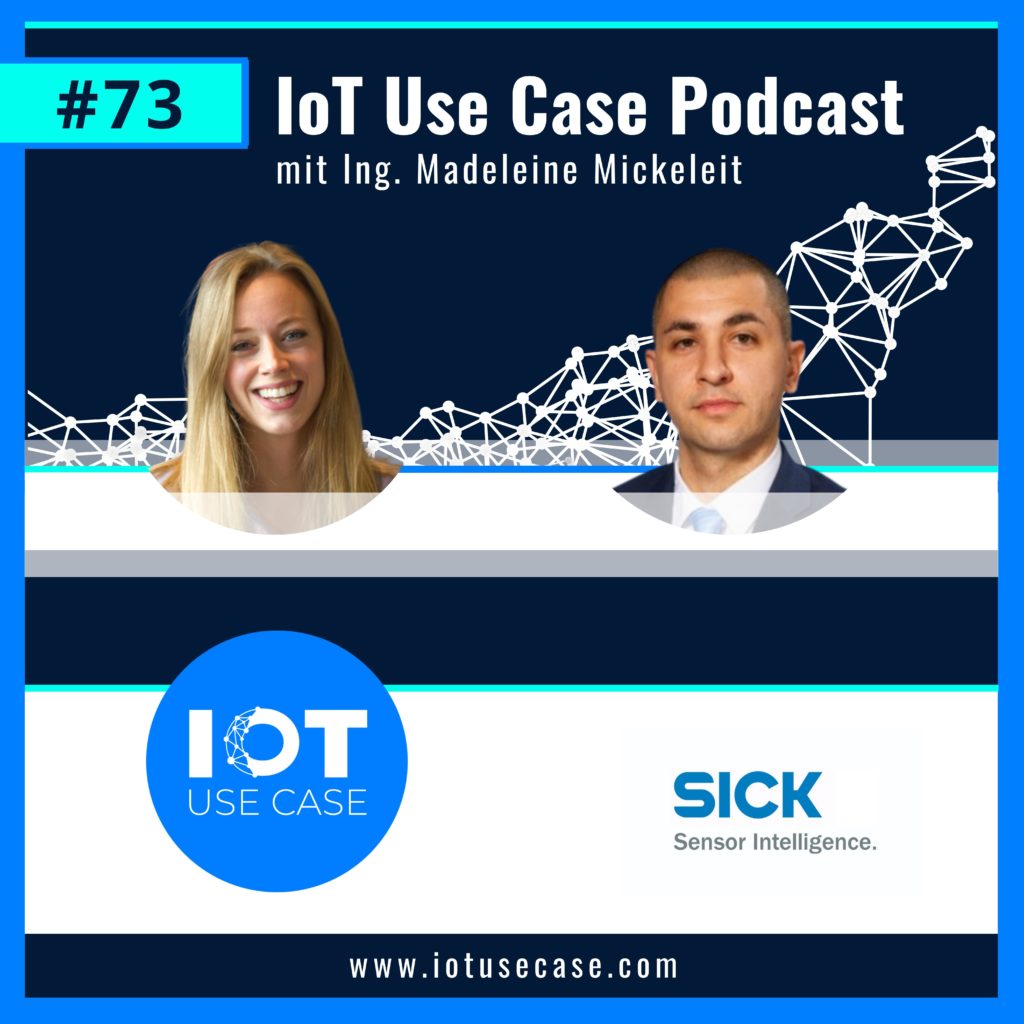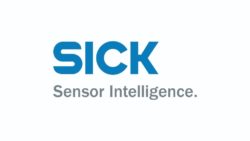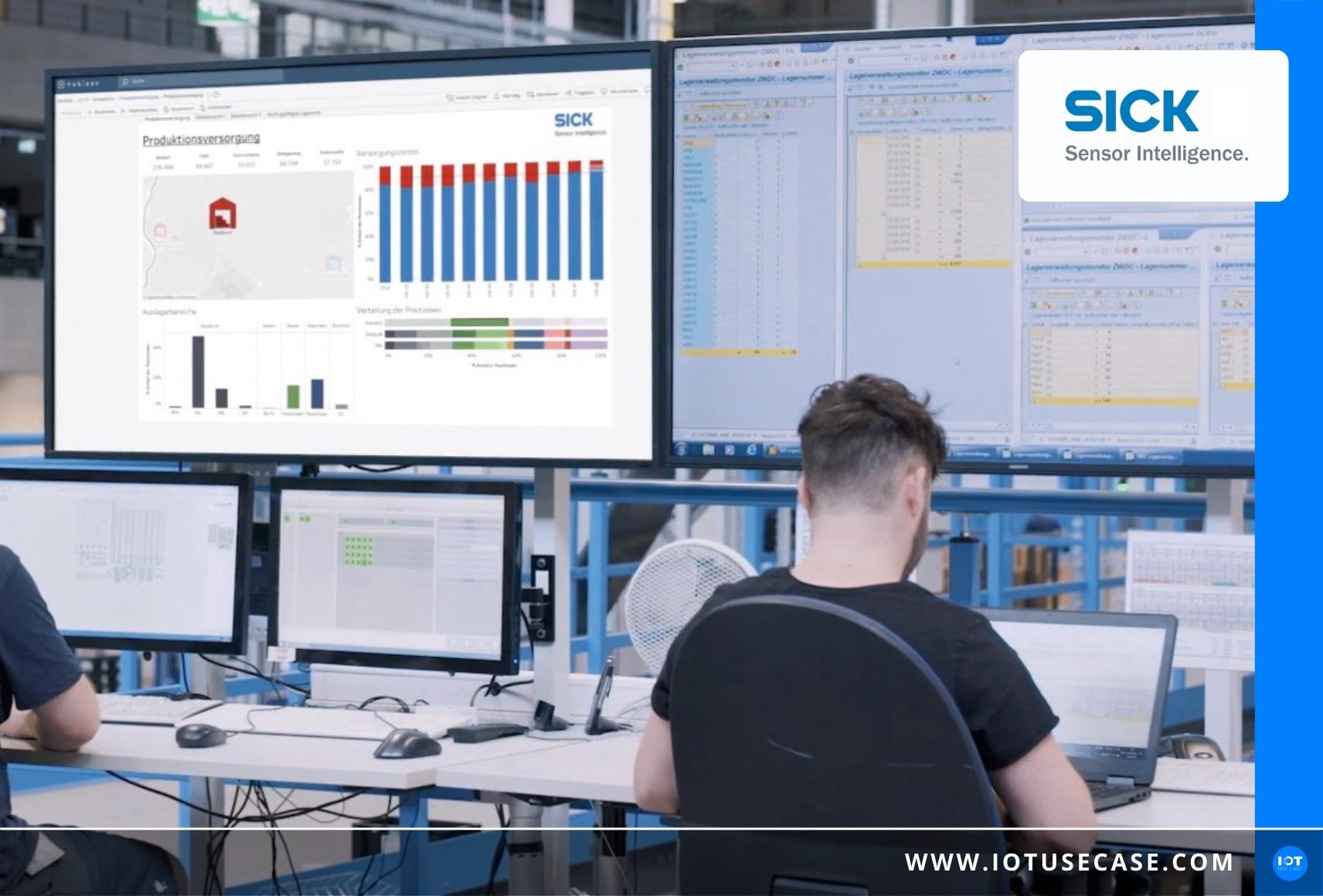SICK AG is best known as a sensor manufacturer. With growing demand from their customers, they are now moving into the solution and consulting business with logistics expertise in production, material flow to process level. In this episode, you can find out what the use cases of digital transformation in the supply chain look like, what the ROI behind it is, and how SICK uses open source technologies properly with its customers.
Episode 73 at a glance (and click):
- [07:02] Challenges, potentials and status quo – This is what the use case looks like in practice
- [11:48] Solutions, offerings and services – A look at the technologies used
- [25:16] Results, Business Models and Best Practices – How Success is Measured
Podcast episode summary
Technology is one thing – the business case is something else. Logistics managers, warehouse experts and maintenance managers want to reduce their search efforts (Visibility), create process transparency (OEE) and reduce non-productive times (Notify) – both in greenfield logistics planning and in the implementation in the brownfield of existing infrastructures.
Logistics expert Roland Avar, Head of Product Management at SICK, can help with the use of technologies such as RTLS, omlox, UBB, RFID or SAP integration. He is a specialist in the field of RTLS (real-time locating systems) and uses real-life use cases to show how the digitization of intralogistics can realize significant cost savings for a company. In episode number 73, he explains IIoT business cases using real-world examples:
- the tracking of load carriers and pallets
- the support of FIFO storage space utilization
- seamless tracking of forklifts indoors and outdoors
By the way: SICK is open for IoT partnerships (example: system integrators) to jointly help customers in the projects.
How important is real-time localization with regard to business processes and how can supply chains also be optimized as a result? Listen to the podcast episode now to learn exactly that!
Podcast interview
Today we dive into the world of sensors and sensor solutions with none other than SICK AG. What I didn’t know myself was that SICK is positioning itself strongly on the market in the direction of open source technologies. In other words, the open technologies that can be integrated into the individual systems; as a holistic solution provider.This is important for many end customers, I hear this again and again in our community. Open source is important to be able to scale, to use technologies for the future.
Today we have with us an expert from the field of logistics. Roland works with a wide variety of customers and goes deep into the individual processes and engages at that level. His unit also works with SAP, among others, and relies on new technology standards, such as omlox, to provide real-time location data.
Roland, you are Head Of Product Management – Localization, everythign concering RTLS at “SICK Sensor Intelligence”. You are an innovative unit within SICK AG. SICK is known as the world’s leading solution provider for sensor-based applications for industry.
You were founded in 1946, have your headquarters in Waldkirch near Freiburg, more than fifty subsidiaries and 11,000 employees worldwide. Not to mention your consolidated sales of around two billion euros from fiscal 2021.
Roland
We have brought an exciting topic. In that direction, we’re taking our listeners on a journey where, for example, we’re connecting real-time location data to business processes so that, in the end, we can optimize the supply chain. SICK is expanding its track-and-trace offering with new, innovative systems.
The systems are moving toward use-case operations, such as tracking load carriers and pallets or seamlessly tracking forklifts indoors or out. But also material flow tracking in the narrow warehouse aisle. It’s about supporting everything around productivity in the warehouse during order fulfillment.
It’s very good that you think in terms of use cases and implement entire solutions with your customers.
We are talking about real-time localization, or rather corresponding track-and-trace solutions. Can you present to us what your vision is? SICK is known as a sensor manufacturer or solution provider with solutions that go hand in hand with this. What is your vision towards IIoT?
Roland
We are quite well known in the sensor field. But when it comes to intralogistics or production that involves digital transformation, SICK also has more than 40,000 products in its portfolio. The basis of any localization or asset management solution in logistics, for example, is – in addition to identification – the complete localization of all objects relevant to the material flow.
The question now is, how can I support SICK in this? As we move into the realm of digital transformation, it’s no longer just sensors that play an important role. That’s where more combination with sensor data, with the software that brings that usage together with different technologies from data sources is needed. Standards are made compatible through a Real Time Locating System (RTLS).
That’s our new system; this works through a consultation, through a proper establishment of the architecture of hardware and software, to the data source or to the pain point.
More and more different terms are used nowadays. I don’t know if anyone has ever heard the term “localization down to the last mile” or the outdoor GPS feature that someone needs indoors. These are requirements for us and the RTLS.
We use UWB technology as such and we customize our systems with hardware and software and connect the business or business data.
Exactly, I always talk about real-world use cases in the podcast to explain the technologies behind them in a simple and understandable way. You have now already mentioned, among other things, the tracking of load carriers. What use cases are we looking at in detail today?
Roland
There are several use cases. Today we want to talk about transparency in the production supply process of intralogistics. All this with the aim of knowing at any time where exactly the required material is at that moment. The use case is located between the main warehouse and the production buildings. Not to forget, the interoperability at data level, with various mapped systems, such as Warehouse Management System or RPS systems, such as SAP.
In other words, it’s about an overarching use case, where it’s not just about intralogistics, but also about networking with other plants, for example production, where it’s about data sharing across the board, plus integration into ERP systems like this, right?
Roland
That’s right. We wanted to show how important location data is in collaboration with business data.
Challenges, potentials and status quo – This is what the use case looks like in practice [07:02]
Let’s zoom in on a daily intralogistics job. For people coming from other backgrounds, I would like to understand how customer orders are processed today.
You said it’s about production supply. Where is the material? How would you imagine a day-to-day job in intralogistics to be?
Roland
The company has various locations throughout the country. As a result, production is no longer located in the same place as, for example, the production warehouse. This presents the company with some challenges. Production employees are not always transparent. In order to understand where the desired material is located or what its delivery status is and to resolve this, data from SAP ERP, is merged with localization data from UWB-covered material routes in the SAP Logistics Business Network.
With such a solution, a digital twin is created that combines hardware and software from SICK on the one hand with the data from the SAP system on the other, to form an integrated solution.
One question to better understand the challenge you brought up; your customers have different processes. What about the delivery status or where is the material? Are these the main challenges from your customers? And what are potentials that you have seen with your customers?
Roland
There are several challenges. Mostly in areas such as data. When we talk about the industry of intralogistics or production logistics, it is not always easy to understand the data. Most of the time, you still have to go on site to physically verify positions from the object or from the tracked material. What’s worse, you have to physically verify what the ERP is displaying. This is not efficient.
Current challenges exist in the direction of transparency after the material has been stored in the warehouse. There are still many gray areas in the supply chain. Similarly, material cannot be localized based on a specific cart. There is no information about when the material will arrive at the production site. There are already many manual posting efforts. When something is posted manually, errors happen from time to time.
At the end of the day, we talk about digitization projects. In the end, this integration between different systems is not there.
This is then also in the direction of IIoT solution or logic, so to speak, I network different trades, which then give the possibility to understand and also evaluate this data.
These data or challenges are solved by different companies and enterprises. You have different partners with you. Are you open to partners who say they provide a necessary building block or input to provide other data in as well? Or is this a fixed SICK solution?
Roland
We also want to provide added value and alone you can not solve the complete problems or requirements from the customer. That’s why, when we are there as an end-user supplier, we would like to strive for collaboration with other partners and solutions, so that the problem can actually be solved by the customer and he gets the certain interoperability delivered. To do that, we need to collaborate with partners at the technology level, but also with partners at the business level to tie the chain together.
Solutions, offerings and services – A look at the technologies used [11:48]
In the end, it’s about how can I understand the data and what data is it anyway? Can you tell us what data is most exciting to your customers?
Roland
We always say that when we talk about data, we need to look at it from different perspectives. Most importantly, profitability from the business point of view. Secondly, from an IT perspective, and thirdly, from the perspective of the people who implement it on the shopfloor.
These are so-called topics that I have now named; three perspectives. They’re easier to understand with a few examples we’ve already seen from industry or use cases. They’re going in the direction of eliminating unproductive time. Also, reducing search times is important for missing materials. It is particularly important to maintain the audit process barrier.
We always say that if you start a digital transformation, then all data is digital and you should also keep the audit process faster and more flexible.
In the end, it also comes down to the higher quality level (Overall Equipment Effectiveness). Since we have the ability to easily find defective materials and not start in the next production step, but either stop or readjust, we can ensure process quality.
You brought up the subject of auditing. This goes in the direction of inventory control and also accounting. You have to look at what the stocks are in the warehouse, what the incoming and outgoing goods are like, and document changes. That belongs in there, doesn’t it?
Roland
Exactly, that then goes from “Where’s my material?” or “Where’s my asset?” to real process optimizations, outside of coordinating where your object ultimately is.
We developed the system, and that’s why customers need this transparency when it comes to process optimization.
You talk to different customers. But what requirements for such a technology system are most important to them, especially when you think about IT?
Roland
We are currently talking about the fact that every company has to do something digitally in order to become more efficient. The solution we have there gives our customer the opportunity to make their business much more efficient. Their process transparency, through a so-called technology mix, can also be increased. In the end, it is important to track the entire shopfloor with different technologies and get the appropriate ROI or TCO calculation right. Whenever it comes to digitization projects, it’s always investment and transparency.
What actually is such a technology mix? Simply put, today’s companies want to track every little part or component. In part, they have to. They would not immediately use appropriate UWB technologies. Instead, they extract information through barcode scanning or RFID technologies, which is actually more cost-effective and useful.
On larger moving objects, such as for forklifts, route trains, AGC’s, AGV’s or the like, track with a tag from the UWB technology, and then the materials and parts are simply coupled or decoupled to the larger ones by other lower-cost technologies.
Then the visibility is created – we always say horizontal and vertical. The employees then have the complete assets in view and have the correct information in their system.
Let’s dive into the solutions. On data ingestion and hardware respectively; you said that this is implemented via tags and RTLS systems. Can you explain what that is, and how exactly does data acquisition work?
Roland
With RTLS, you have the data in real time. For us, the system is called “Tag-LOC”. This system builds bridges between IoT data and business transactional data. This must create transparency in the warehouse, on which we must first build a certain infrastructure. This indoor infrastructure is something that goes towards UWB Anchors – that then works on walls, and the tags with UWB technologies are installed on various items, such as carriers, pallets, forklifts, and the like.
Then, when the hardware is installed and working, we have our software asset analytics. This makes the position of the material flow more transparent. The localization data is directly integrated with SAP.
Through this software, in the end, the production plan is able to make dynamic decisions. Integrating with SAP is a very specific operation – for this we use SAP’s Global Track and Trace (GTT) module to ensure automatic booking and full transparency in operations.
First of all, the question again; we have now recorded the data, that works through the tag locs that are placed on each item. This runs into the RTLS system, which builds the bridges.
The data must now be processed. Does this happen in the RTLS system itself or how does it work?
Roland
Yes, the data processing is done in our Asset Analytics software. This software is technology-independent and highly flexible, for example, when it comes to visualization, evaluation and, of course, position data or events from sensor data. As already mentioned, our offer and offering is concentrated in the direction of seamless tracking.
The important thing is that one technology cannot do everything by itself; it has to be a mix of technologies. That’s why for indoor we use RTLS tracking, ultra-wideband, but we additionally support BLE, GPS and similar technologies towards RTLS.
Still worth mentioning, the tracking or RTLS data get more context when they can talk together with an identification sensor or identification system. These can then come from SICK or from third parties.
This means that you are initially technology-independent. No matter what technology the customer has, they don’t have to deal with that, you can integrate that. And seamless tracking would mean seamless integration with individual systems, not just SAP.
To clarify the buzzword “UWB” for indoor tracking. You already said it means “ultra-wideband.” Can you explain that in more detail in summary?
Roland
The technology is not the latest on the market and also quite well-known. Nevertheless, there are more and more use cases in real-time location systems. The technology itself is used indoors for tracking various assets because it creates pretty good precision.
The technology itself also has lower power consumption while tracking the various devices.
Ultra-Wideband is a radio-based technology and works on the principle of Time of Flight and is in the frequency band from 3.1 GHz to 10.6 GHz. It also does not conflict with existing other technologies that may be in use today for various other applications.
I would say thanks to this centimeter precision, existing processes can be connected to digital services. This is what can be used in the context of IoT and business data or Industry 4.0.
We have now talked about data acquisition and processing. The next step would be to talk about recovery.
Earlier you said it was about actually understanding the data. I would argue that this is happening in your software. First of all, can you mention again what software this is and how the intelligence behind it works, that is, the evaluation for your customers themselves?
Roland
The software itself does enables you to see this transparency or optimization potential. It is called “Asset Analytics” and comes with various functions. For example, a digital folder. What we still have physically today is then put into this digital folder with live tracking options. Then there are the so-called “virtual zone management features” that can establish corresponding business logic from the customer’s point of view.
There’s no one sitting with the software looking, of course – I always say software is there for you to see when something’s wrong, that’s why you invest in it. This is done through various rules, alerts, dashboards and reports so that you are always informed. You’ll always get an email, you’ll get a message on your smartwatch to keep track of the position of the material at the end of the day, or to be able to check in real time if your asset is really where it should be.
So this is where everything comes together; to see where the material is, I can then see that, can also track the delivery status and detect where the material is stored. What I often see in our community or with partners are heatmaps – you can see where the forklifts are driving. Is that involved in the software for you guys as well?
Roland
We also have spaghetti maps and heat maps. The heatmaps you mentioned then give the even deeper transparency to optimize the part from the forklift movement. This also occurs with us so that we can see the dynamic movement, and if something is too dynamic, optimize it.
For those who want to build additional logic and even reports or different business logic, we provide our API or programming interfaces; there we have raw data or already processed data available.
Results, Business Models and Best Practices – How Success is Measured [25:16]
I would still like to talk about the business case. Many people say to me, “Hey, it’s also about saving costs. Or maybe also to leverage new potential, in the direction of sales.” Do you have some kind of return-on-investment calculation for the cases or insights as well?
Roland
The business case has always focused on implementing real-time tracking of materials. Then the automatic coupling or even decoupling of different materials. For example, Goods Issue or Goods Receipt are automatically posted. And complete monitoring of milestones, production progress, which then goes towards make to order, sales fulfillment. And of course to keep the search effort low.
To do this, we made several ROI calculations to get value for our customer and the industry as such.
We have an RTLS system that comes with hardware and software. This IoT data is then coupled with the business context data. This is – we say – an integrated end-to-end solution. This serves our customer like a key. The complete key to the transparency they need in digitization projects. This is what gives interoperability between different elements in the supply chain.
If you think of IIoT as a buzzword, also the integration of data, you also mentioned SAP with the global track and trace system – I can integrate data there, but probably into other systems as well.
It is also becoming increasingly interesting to network across trades. With the supplier, with the customer, with the end customer and perhaps also various service providers who are involved there. That would be an end-to-end approach to say I also integrate a full chain. Is this already heading in that direction?
Roland
Exactly, that’s going in that direction. The future is pretty close. I would say when it comes to complete transparency – we’ve seen from projects mostly, if you’re installing hardware exclusively and not much software, you’re not going to get a handle on a process with that. You have to think bigger about how something fits into the business context, like IoT data. That’s where we come in with our consultations.
Do you have any empirical data of specific KPIs that you can share with us?
Roland
We got a few KPIs, for example, the reduction of total cycle time and the elimination of unproductive time by about 20 percent. It’s also important to note that just by making the process more transparent, we save an average of 250,000 euros per year through traceability and process automation.
We try to keep the search time low. Most of the time, it goes from 45 minutes to 15 minutes; that’s about 66 percent. Except that you install the hardware there and don’t have the search hassle anymore.
Madness! I imagine that the numbers are highly dependent on the size of the company. Earlier you brought three perspectives to this, and the last one is just exciting. So to look at what the search times say, how much time I spend putting materials away. How much time do I spend looking for information? How much do I have to hand over manually as well?
I’m always interested to see what happens next. You are constantly developing. You’ll develop the unit you’re in and form partnerships. What will follow in the future?
Roland
The cooperation with SICK enables the customer to directly take advantage of complete solutions. This means we always start with the process shopfloor, consulting on creating the right architecture, all the way to project execution with the possible integrations in MES, ERP systems like SAP, and everything is then wrapped up with a Service Level Agreement (SLA) – optional of course – for optimal system behavior and long-term cooperation.
One open point is that our system is not closed with proprietary protocols. But we also accept data from other providers through interfaces and combine them within our software. In this respect, we have already worked with SAP to offer this smart logistics solution for a DACH market.
Very good, thank you. Interesting to see how it all develops. If a partner or customer is listening and finds this interesting, they are welcome to look at the show notes to contact your business unit directly.
Roland
I also thank you, and say: search less, find more!











